Art Fairs
Are We at ‘Peak Art Fair’? Collectors and Advisors Say They’re Hitting Their Saturation Point—and Something’s Got to Give
In the wake of a thinner-than-usual Armory Week, collectors and advisors reflect on the shifting art-fair landscape.
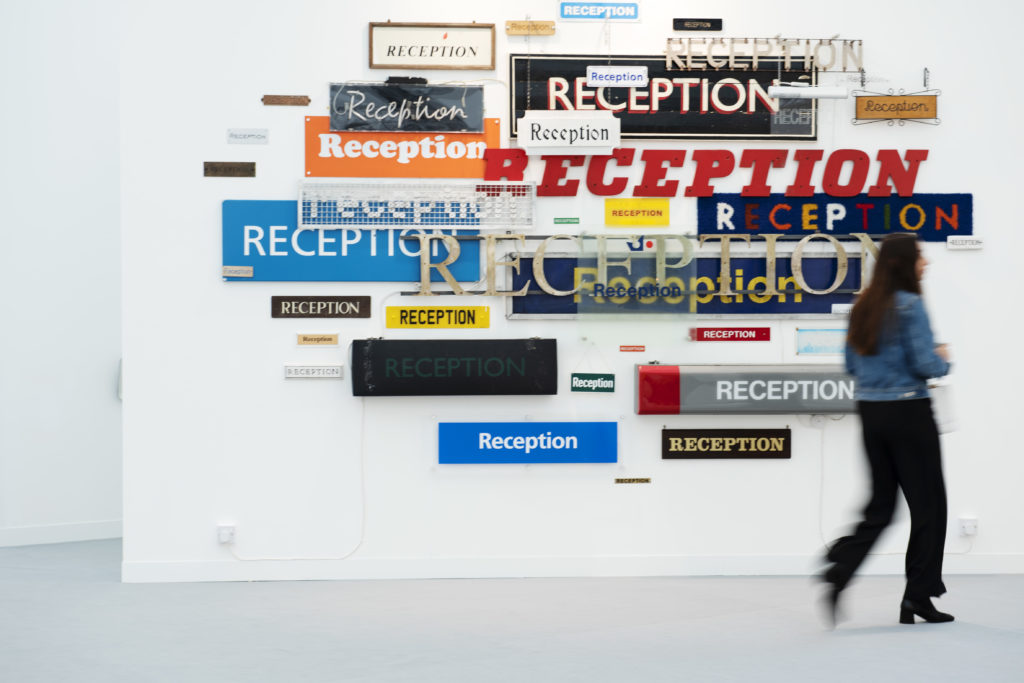
In the wake of a thinner-than-usual Armory Week, collectors and advisors reflect on the shifting art-fair landscape.

Julia Halperin &
Tim Schneider

In 2000, there were fewer than 60 art fairs around the world. Today, that number has ballooned to almost 300, according to the latest UBS Art Basel art market report—one for almost every day of the year.
“Fairtigue”—that special brand of weariness that afflicts the art industry as it makes an endless march through the convention centers of the world’s great cultural capitals, sustained by little more than alcohol, air kisses, and other people’s money—has been a worsening epidemic for years. But now, art professionals say, we may be at a tipping point.
“Five years ago I felt a pressure to attend as many fairs as humanly possible,” says the New York-based art advisor Liz Parks. “I have stepped that back fairly significantly.”
Others concur. Mihail Lari, a collector based in San Francisco and Los Angeles, attended nine fairs in 2014. Three years later, he attended none. These days, he has gone back up to five, but all of them take place in the cities where he lives. “Otherwise, the number would have remained at zero,” he tells artnet News. “We’d rather prioritize gallery shows over art fairs any day.”
The art advisor Rob Teeters, meanwhile, says he attended around 10 to 12 fairs around five years ago—a time which, not coincidentally, corresponds to the most recent art market peak. Today, he has cut that number in half. The more circumspect market means that “collectors now have the luxury of taking their time and making thoughtful decisions,” he notes, making each art-fair VIP preview less of an adrenaline-pumping, must-attend affair.
Unsurprisingly, the fair landscape is shifting in response to these changing attitudes. Armory Week in New York, which ended on Sunday, was thinner than usual because three of the fairs that are typically on the schedule—the Collective Design fair, Moving Image, and NADA—did not return. VOLTA was also called off just a week before opening due to structural issues at Pier 92, a crisis that forced a contingent of Armory Show exhibitors to relocate to VOLTA’s usual home at Pier 90.
New York isn’t the only city experiencing a contraction. MCH Group, the parent company of Art Basel, announced last fall that it would divest from most of the regional art fairs it had invested in just a few years earlier, including the India Art Fair, Art Dusseldorf, and Art SG. The most recent editions of Art Stage Singapore and Art Stage Jakarta were also canceled abruptly, while the Outsider Art Fair called off plans to expand to Basel last year.
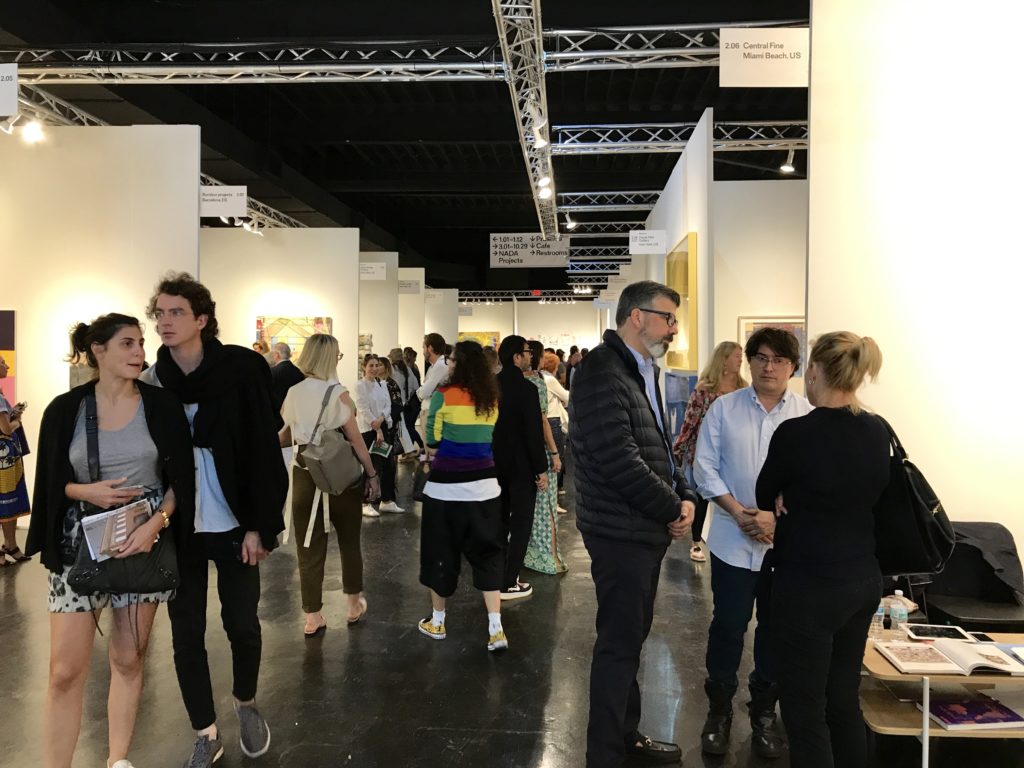
A view inside the busy opening day of NADA Miami 2018. The organization continues to operate its Florida fair. Photo by Tim Schneider.
Dealers are feeling the squeeze, too. Many have noted that fairs disproportionately benefit the top players over the midsize and little guys, who often pay similar amounts to participate but offer less expensive work. “What we hear from members and galleries in general is that there are too many fairs—everybody’s cutting back on fairs,” says Heather Hubbs, the executive director of NADA. Galleries surveyed for the Art Basel UBS art market report took part in fewer fairs last year, participating in an average of four, down from five in 2016 and 2017.
“We may now be at ‘peak fair,’” says the art advisor Kristy Bryce. “The number of fairs feels plentiful to collectors, and I don’t know of any gallerists wishing there were more fairs. Every market eventually finds its equilibrium point between supply and demand. For art fairs, we are probably at that point now.”
Don’t cut up your VIP cards just yet; fairs aren’t going away. Sales made at these events still comprise a significant portion of dealers’ annual turnover. Artists, much as they may dislike attending fairs, usually still want the exposure (and financial rewards) that come with having their work inside their galleries’ booths there. And collectors, advisors, and curators say fairs remain useful tools—in moderation.
As the industry seeks to find art-fair equilibrium, however, changes may be in store. As some fairs close down, the survivors may stratify, seeking to appeal to specific clientele such as first-time buyers, locals, or members of the .0001 percent.
Most agree that fairs remain extremely useful for novice collectors as an opportunity to meet dealers and see a broad range of art in person. “I always try to bring new collectors to fairs—it gives them a chance to see a lot of art in one place and gives me a chance to observe my clients’ tastes and help guide them to the best examples of the kinds of art that I notice they are most attracted to,” Bryce says.
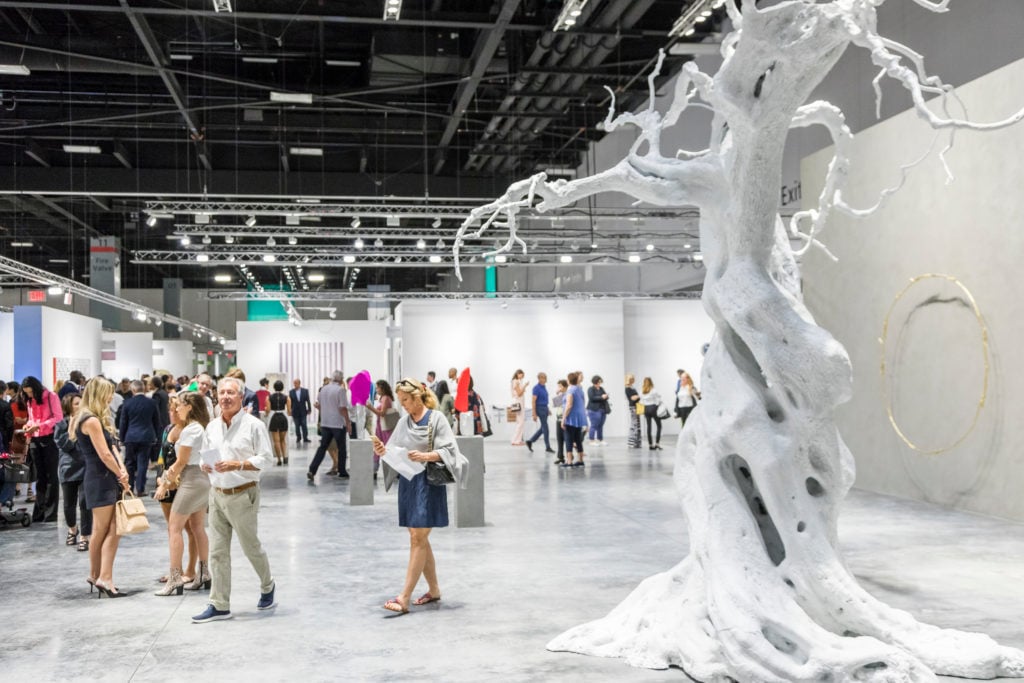
Art Basel Miami Beach 2017. Photo courtesy of Art Basel.
At the same time, veteran collectors are developing more and more discriminating palettes for art fairs, privileging the experience—a digestible number of stands, natural light, convenient logistics, good food, and good conversation—over buzz and sprawl. “The more and more an art fair replicates the gallery-going experience, the more sustainable it is,” says the art advisor Lowell Pettit.
They also emphasize the value of regional fairs like SPArte or Zona Maco, which offer a deep dive into a local art scene that might otherwise be onerous to navigate, while at the same time giving collectors “the benefit of visiting Zwirner and White Cube and some of the heavyweights” at their booths, Pettit notes.
That means that events like Art Basel Miami Beach, and others that have attracted a similar circus of promotional events and parties, are becoming less appealing to certain kinds of collectors. Lari, the West Coast collector, says he “hit a wall” after elbowing his way through a crowd to reach the front door of his Miami hotel five years ago.
“We’re finding that art fairs may be the victims of their own success,” he adds. “FOG and Frieze LA had significant attendance, which meant that a lot of people who are not collectors are showing up. That’s great for dealers wanting to meet potential new customers, but too social for collectors who want to be more focused on talking about and buying new art.”
For art-fair organizers and dealers, this recalibration may require a change in strategy. Patron Gallery in Chicago opted out of the Armory Show this year and instead rented out a vacant space on the Lower East Side for a three-day pop-up featuring two artists who had never had an exhibition in New York.
“For a third of the budget, we can just put on a show,” notes the gallery’s co-founder Emanuel Aguilar. By the weekend, the gallery had sold out of works by self-taught Los Angeles-based Greg Breda and sold several photographs by Atlanta-based artist Myra Greene for prices between $4,500 and $28,000.
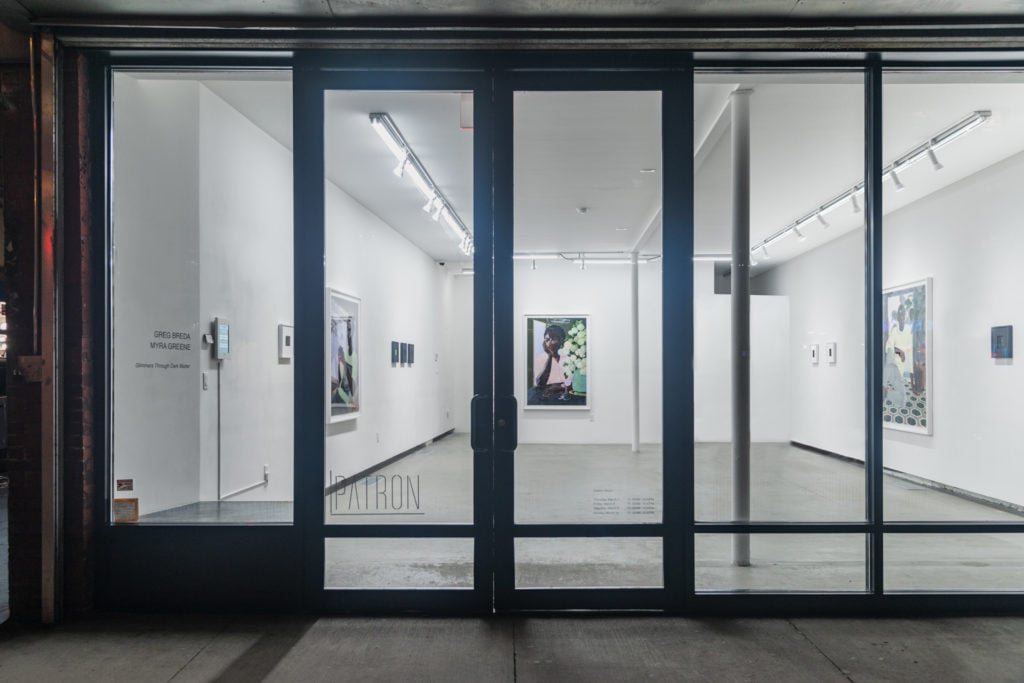
Installation view, “Glimmers Through Dark Matter,” Greg Breda and Myra Greene. PATRON | New York Projects. Courtesy of PATRON Gallery. Photo Credit: Craig White.
Meanwhile, NADA decided against holding a 2019 edition of its New York fair after its venue, Skylight Clarkson North, sold last year to a new buyer that Hubbs described as “moving really quickly” on its plans for the space. As an alternative, the alliance used this Armory Week to stage its first annual Gallery Open, a weeklong initiative that combined pop-up shows by out-of-town exhibitors, guided tours of affiliated exhibitions (particularly by galleries permanently based in New York), and special programming such as performances, artist talks, and dinners across Manhattan and Brooklyn.
NADA is also expanding its experiments with non-fair summer programming on Governors Island. Last July, the organization presented “Close Quarters,” a monthlong joint exhibition featuring works from eight member galleries inside a single Colonial Revival house on the island. This year, Hubbs tells artnet News, the alliance will program three houses for roughly triple the duration of “Close Quarters.” The as-yet-unnamed project will go on view this May during the week of Frieze New York and run through August 4.
Steven Learner, the founder of the Collective Design fair, is also re-evaluating. Since other events have grown up to fill the void he created his fair to address back in 2013, he decided after last year’s edition that presenting another incrementally refined version of the same format may not be what his community of exhibitors, designers, and collectors needs in 2019.
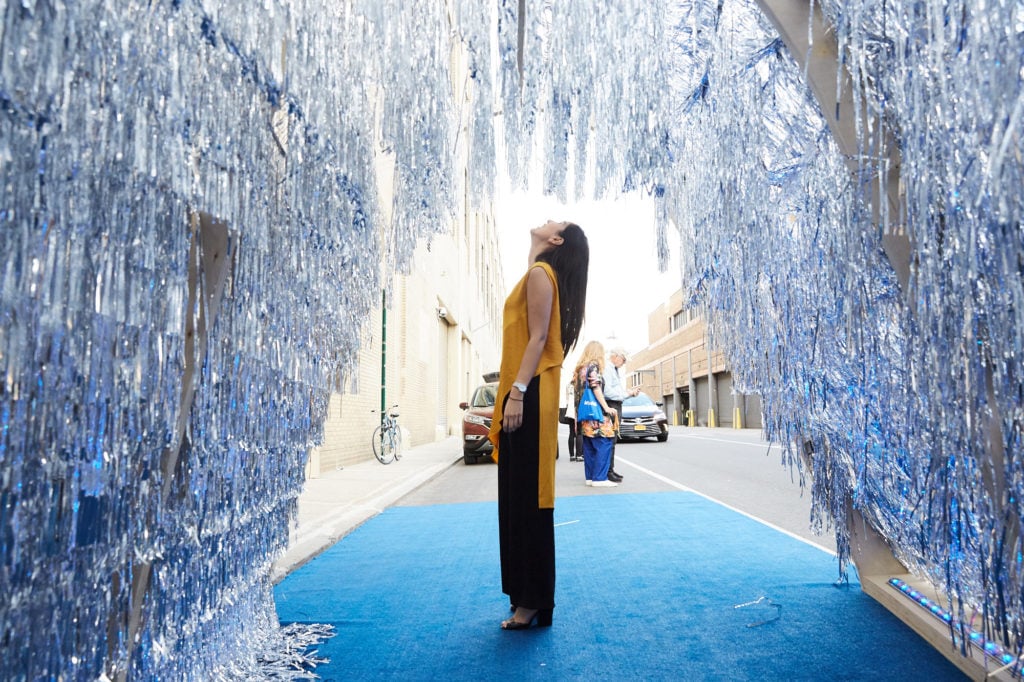
LAB at Rockwell Group, Tinsel Town. Courtesy of Collective Design and photographer Chaunte Vaughn.
“I would be a fool not to recognize how different the landscape is now,” he says. Learner announced last November that he would shelve Collective to “take some time to think about the next evolution.” Crucially, he didn’t feel he could thoughtfully undertake that process while organizing another edition. “A friend of mine told me, ‘You can’t change a tire on a moving car,’” explains Learner. “We need to find new models.”
And whether in art, design, or their intersection, it’s possible we can only do so by stepping off the globe-spanning, ever-spinning hamster wheel of art fairs we now find ourselves inside.